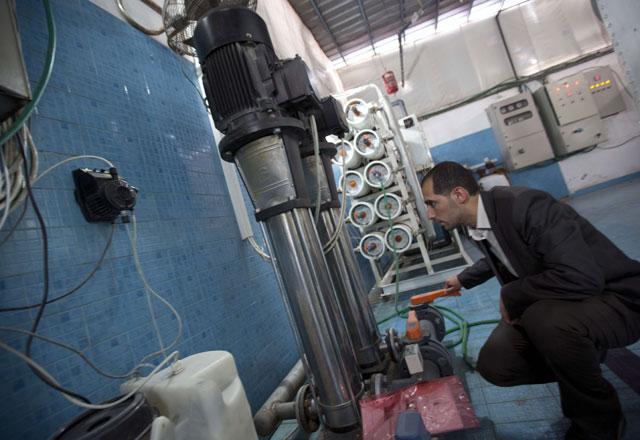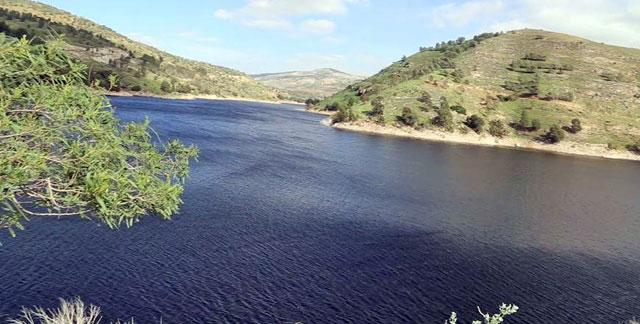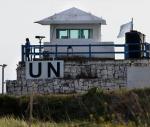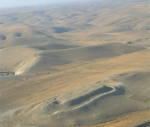You are here
Gaza’s water shortage worsening, no easy solutions seen
By Reuters - Jan 26,2017 - Last updated at Jan 26,2017
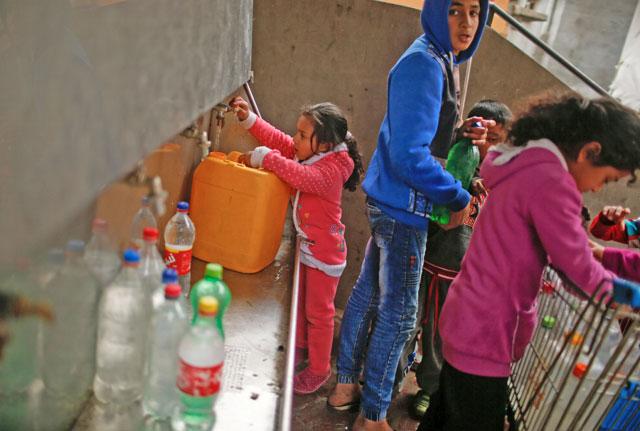
Palestinian children fill bottles and containers with drinking water from public taps in Jabaliya refugee camp in the northern Gaza Strip, on Tuesday (Reuters photo)
GAZA — Marwan An Najar, a Palestinian from the south of the Gaza Strip, says he has not tasted sweet tap water in 10 years. Every day, he travels four kilometres to fill a 20-litre plastic jerrycan at a local desalination station.
Gaza has long suffered severe water problems, with its aquifer contaminated by sewage, chemicals and seawater and the territory’s three desalination plants unable to meet demand. To drink, most citizens depend on imported, bottled water.
But locals and development specialists say the situation is getting beyond dire, with more than 90 per cent of the water in the aquifer unfit for domestic use, according to Rebhy Al Sheikh, the deputy chairman of the Palestinian Water Authority.
“The [tap] water is salty, as if it came straight from the sea. We have stopped drinking it,” said Najar, a father of six, while queuing to get water at the desalination station in Khan Younis.
Instead, he and others use the desalinated water to wash and drink, while those that can afford it buy bottled water. The water from the tap, when it flows, is barely usable, they say.
“It is not even fit for the animals to drink,” said Fathy Mhareb, 60, an unemployed father of eight. “We buy sweet water and use the salty water to shower.”
Contamination
The causes of the problem are multiple, but stem largely from the contamination of the aquifer.
Gaza’s main water source contains 55 to 60 million cubic metres of water over the course of a year, but demand from Gaza’s 2 million population exceeds 200 million cubic metres.
That means the aquifer is over-strained, allowing seawater from the Mediterranean to seep into it, along with sewage and chemical run-off.
“There is a continuous drop down and invasion of sea water,” said Sheikh, mentioning too the high nitrate content.
In a study published in 2012, the United Nations said Gaza would become unlivable by 2020 and its aquifer unusable by 2016. Sheikh said that was almost the case — according to international standards, the aquifer is 96.5 per cent unusable.
The situation is not helped by desperate Gazans trying to tap into the underground reserve via homemade wells. Others use home-spun techniques to desalinate water and sell it on the streets, but the water remains contaminated, Sheikh said.
One solution has been buying more water from Israel, which has vast desalination capacities. But it took the Palestinians 20 years of negotiation — from 1995 to 2015 — to secure the purchase of just 5 million more cubic metres.
The blockade of Gaza imposed by Israel and Egypt for most of the past decade also makes it difficult to push ahead rapidly with major projects such as new desalination facilities.
A 10-million-euro, EU-funded desalination plant was opened by the European Union and the United Nations Children’s Fund last week. Mohanlal Peiris, a water and sanitation specialist with UNICEF, said the facility, which blends water with that from the municipality, would eventually serve 75,000 people.
The big hope is that a large-scale desalination plant, costing 500 million euros ($535 million), can be built to get ahead of the rising demand. Plans are in the works, but it remains years off.
For now, two of Gaza’s three desalination facilities are functioning, producing just 8,600 cubic metres of water a day.
Related Articles
With Gaza's supply of drinking water expected to dry up by 2020, a Palestinian engineer is pioneering a machine to make seawater potable for residents of the coastal territory.
AMMAN — Head of the Senate Agriculture and Water Committee, Senator Akef Zoubi, on Wednesday called for the establishment of a Red Sea water
AMMAN — Climate change, the Syrian refugee influx and the massive growth in various sectors have all contributed to increasing demand on wat


